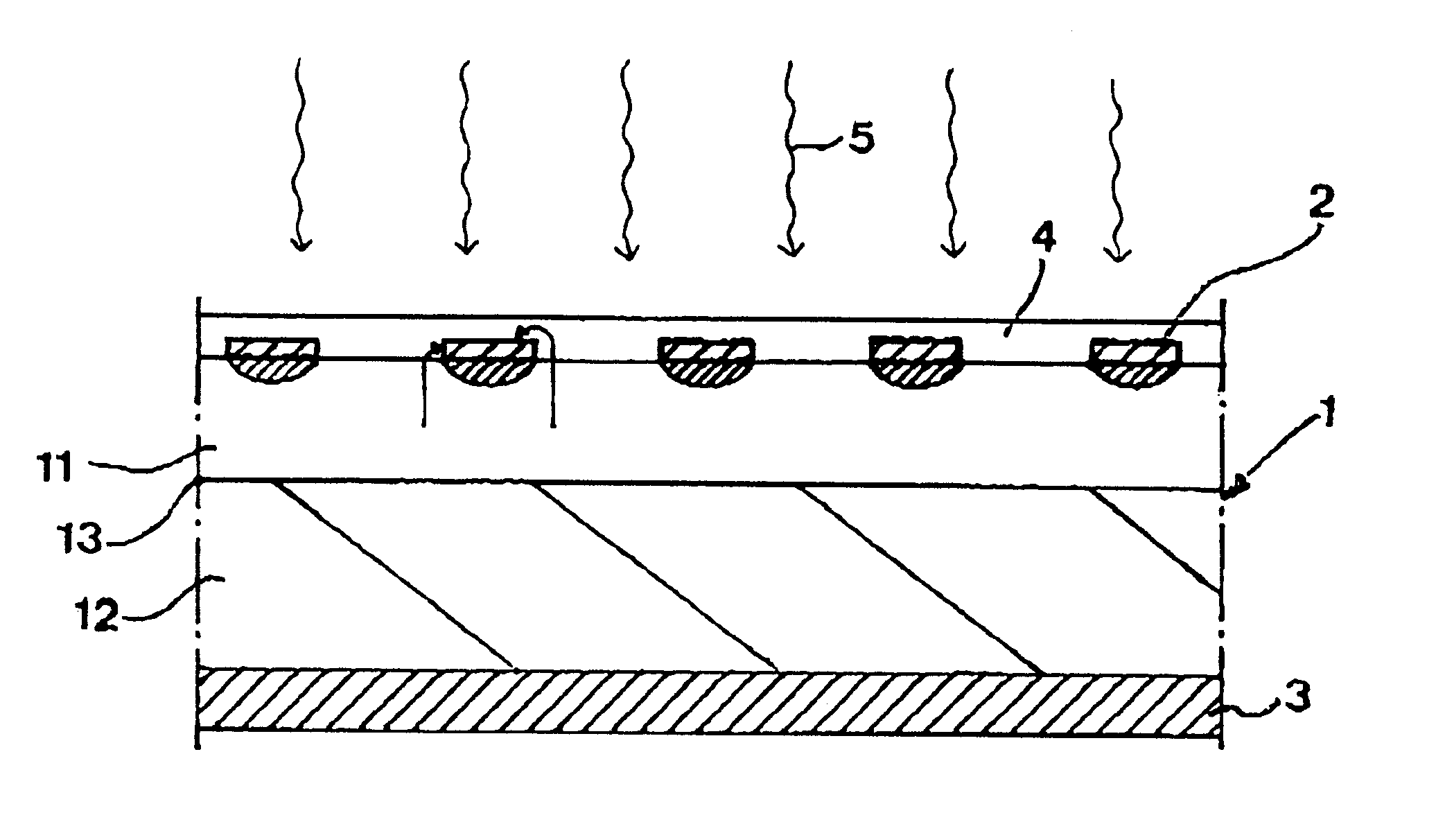Photoconductive switch with multiple layers
a photoconductive switch and multiple layer technology, applied in the direction of logic circuits, pulse techniques, instruments using specific components, etc., can solve the problems of inability to reduce the contact resistance, the difficulty of obtaining a good contact with a low, and the inability to use sno.sub.2 in the way mentioned abov
- Summary
- Abstract
- Description
- Claims
- Application Information
AI Technical Summary
Benefits of technology
Problems solved by technology
Method used
Image
Examples
Embodiment Construction
A photoconductive switch according to a preferred embodiment of the invention is very schematically shown in FIG. 1, and this switch has a first layer 1, which in this case is made of intrinsic diamond and typically may have a thickness of about 200 .mu.m, and two contact layers arranged on opposite sides thereof, namely a first contact layer 2 and a second contact layer 3 which are connectable to different potentials for applying a voltage across the first layer 1. Accordingly, the two contact layers are adapted to be connected to an electrode each (not shown) for connecting the switch to for example an electric circuit of an apparatus for controlling a power network.
The first contact layer 2 is provided with apertures 4 allowing light 5 applied on the switch from the side of the first contact layer to reach the first layer for making the switch conducting upon applying a voltage thereacross, irrespectively of the direction of such voltage. The intrinsic diamond of the first layer ...
PUM
 Login to View More
Login to View More Abstract
Description
Claims
Application Information
 Login to View More
Login to View More - R&D
- Intellectual Property
- Life Sciences
- Materials
- Tech Scout
- Unparalleled Data Quality
- Higher Quality Content
- 60% Fewer Hallucinations
Browse by: Latest US Patents, China's latest patents, Technical Efficacy Thesaurus, Application Domain, Technology Topic, Popular Technical Reports.
© 2025 PatSnap. All rights reserved.Legal|Privacy policy|Modern Slavery Act Transparency Statement|Sitemap|About US| Contact US: help@patsnap.com



